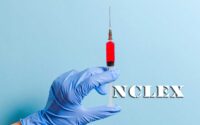Anatomy Questions and Answers
Anatomy Questions and Answers paper for the written examination is given below. Candidates who are looking for Anatomy exam Questions and Answers paper can find in this section. The applied candidates who are getting prepared for the Anatomy can view this page for the Anatomy Last Ten Years Questions and Answers Papers.

Download the Anatomy Questions and Answers & Solutions & make it as a reference for your exam preparation. Take advantage of these Anatomy Questions and Answers Papers in a proper manner to get qualifying Marks. Last 5 years Anatomy Questions and Answers Papers provided here. Candidates who are applied for the above exam can check and download the Anatomy Questions and Answers Papers from here.
Questions and Answers on Anatomy
1. What is not true for the nerve supply of the diaphragm?
(1) Motor fibres of the phrenic nerve
(2) Sensory nerve fibres come from the lower six intercostal nerves
(3) Sensory nerve fibres come from phrenic nerve
(4) Nerve come from cardiac plexus
2. Which of the following is a true statement about the conjoint tendon?
(1) It is formed from the lower fibres of external oblique muscle.
(2) It descends behind the deep inguinal ring.
(3) Ductus deferens passes medial to it.
(4) It is innervated by iliohypogastric nerve.
3. Which muscle is not slashed if a cut is made just below ischial tuberosity?
(1) Semitendinosus
(2) Semimembranosus
(3) Long head of biceps femoris
(4) Sartorius
4. The bones involved in transverse arch of the foot include the following except :
(1) the cuboid
(2) the cuneiform
(3) the bases of five metatarsals
(4) the calcaneal tuberosity
5. What is NOT true for joints of the heads of the Ribs?
(1) The first rib and the three lowest ribs articulate by a single synovial joint with their corresponding vertebral body.
(2) The heads of second to the ninth ribs, articulate by means of a synovial joint with the corresponding vertebral body and that of the vertebra below it.
(3) The heads of the second to the ninth ribs articulate by means of a synovial joint with the corresponding vertebral body and that of the vertebra above it.
(4) A strong intra-articular ligament connects the head of the rib to the intervertebral disc.
6. The articular disc of the temporo- mandibular joint receives some fibres of
(1) lateral pterygoid
(2) medial pterygoid
(3) anterior fibres of temporalis
(4) posterior fibres of temporalis
7. What is NOT true for atlanto-axial joint?
(1) It is a synovial joint.
(2) It is a pivot joint.
(3) It permits rotation movement of head.
(4) It is a fibrous joint.
8. Shoulder abduction involves all of the following, except :
(1) movement of sternoclavicular joint
(2) acromioclavicular joint
(3) medial rotation of scapula
(4) elevation of humerus
9. All of the following joints are involved in movements of supination and pronation, except :
(1) Superior radioulnar joint
(2) Middle radioulnar joint
(3) Inferior radioulnar joint
(4) Radio carpal joint
10. Thigh is rotated laterally by all of the following muscles, except :
(1) Piriformis
(2) Quadratus femoris
(3) Gluteus medius
(4) Obturator internus
11. Anterior cruciate ligament of femur prevents
(1) Anterior dislocation of tibia
(2) Anterior dislocation of femur
(3) Posterior dislocation of tibia
(4) Posterior dislocation of femur
12. Which of the following statement is true about ankle joint?
(1) Itis a cartilaginous joint
(2) It is more stable at dorsiflexion position.
(3) It is more stable at plantcrflexed position.
(4) It is strengthened by deltoid ligament.
13. Pubic symphysis is a type of
(1) primary cartilaginous joint
(2) secondary cartilaginous joint
(3) fibrous joint
(4) synovial joint
14. Smallest ball and socket joint in the body is
(1) First carpo-metacarpal joint
(2) Incudo-stapedial joint
(3) Incudo-malleolar joint
(4) Tympanostupedal joint
15. Articular cartilage has all of the following charactcristic features, except :
(1) It is devoid of perichondrium.
(2) It is avascular.
(3) It has a rich nerve supply.
(4) It lacks capacity to regenerate.
16. Joint between vomer-sphenoid is a type of
(1) Syndesmosis
(2) Schindylesis
(3) Synostosis
(4) Gomphosis
17. Hinge variety of synovial joint is also known as
(1) Ginglymi
(2) Trochoid
(3) Spheroidal
(4) Bicondylar
18. The type of joint between sacrum and coccyx is
(1) Symphysis
(2) Synchondrosis
(3) Synostosis
(4) Syndesmosis
19. Type of suture present between parietal and occipital bone is
(1) Metopic suture
(2) Sagittal suture
(3) Hambdoid suture
(4) Coronal suture
20. Knee joint is a type of
(1) Symphysis
(2) Synarthrosis
(3) Ampbhiarthosis
(4) Diarthrosis
| Practice Set | MCQs |
| Quiz | Questions and Answers |
| Important Questions | Viva Questions |
21. What type of joint is present in growth plate?
(1) Fibrous
(2) Primary cartilaginous
(3) Secondary cartilaginous
(4) Plane joint
22. Klippel – Feil sequence is
(1) Cervical vertebrae fused causing reduced mobility
(2) Thoracic vertebrae fused causing reduced mobility
(3) Thoracic and lumber vertebrae fused causing reduced mobility
(4) Lumber and sacral vertebrae fused causing reduced mobility
23. Sternoclavicular joint is a
(1) Plane variety of synovial joint
(2) Saddle variety of synovial joint
(3) Pivot variety of synovial joint
(4) Condylar variety of synovial joint
24. Which of the following is not a branch of cavernous segment of internal carotid artery?
(1) Dorsal meningeal branch
(2) Inferior hypophyseal branch
(3) Anterior meningeal branch
(4) Ophthalmic branch
25. The vertebral artery traverses all of the following, except :
(1) Foramen magnum
(2) Subarachnoid space
(3) Intervertebral foramen
(4) Foramen transversarium
26. Which of the following is a true statement about portal vein?
(1) It is formed by joining of superior mesentric and splenic veins.
(2) It descends behind the appendix.
(3) It lies in root of the mesentery.
(4) It ends in inferior vena cava.
27. Profunda femoris artery is a branch of
(1) External iliac artery
(2) Femoral artery
(3) Poplitcal artery
(4) Posterior tibial artery
28. The arch of aorta lies in the
(1) superior mediastinum
(2) anterior mediastinum
(3) middle mediastinum
(4) posterior mediastinum
29. The branches of internal iliac artery include all of the following, except :
(1) Uterine artery
(2) Middle rectal artery
(3) Obturator artery
(4) Inferior epigastric artery
30. Which of the following artery forms anastonosis around surgical neck of humerus?
(1) ist part of axillary artery
(2) 2nd part of axillary artery
(3) 3rd part of subclavian artery
(4) 2nd part of subclavian artery
31. Cephalic vein drains into
(1) Brachial vein
(2) Subclavian vein
(3) Axillary vein
(4) Baselic vein
32. The branch of right coronary artery is
(1) Obtuse marginal
(2) Acute marginal
(3) Posterior inter-ventricular
(4) Diagonal
33. Left superior intercostal vein drains into
(1) Azygous vein
(2) Hemiazygous vein
(3) Innominate vein
(4) Left branchio-cephalic vein
34. Which of the following statement is true for thoracic duct?
(1) It passes through aortic opening of diaphragm.
(2) It starts at the level of T3.
(3) It opens into superior vena cava.
(4) It crosses from right to left at T8
35. Submental lymph nodes drain all, except :
(1) Anterior palate
(2) Tip of tongue
(3) Floor of mouth
(4) Lower lip
36. Lymphatics of stomach includes all except :
(1) Right gastroepiploic nodes
(2) Pyloric nodes
(3) Pre-aortic nodes
(4) Coeliac nodes
37. Lymphatics from the spongy urethra drain into the following lymph nodes :
(1) Superficial inguinal nodes
(2) Deep inguinal nodes
(3) Internal iliac nodes
(4) Sacral nodes
38. The statement which is NOT true about palatine tonsil?
(1) It develops from — second pharyngeal pouch.
(2) Its arterial supply is from facial nerve.
(3) Its sensory supply is by elossopharyngeal nerve.
(4) It increases after puberty.
39. Discrete lesions of hippocampal formation causes
(1) The affected individual unable to remember past memories but new memories unaffected.
(2) The individual unable to remember new memories but past memories unaffected.
(3) Both new and past memories unaffected.
(4) Both new and past memories affected.
40. Which part of the ventricular system contains choroid plexus?
(1) Frontal horn
(2) Occipital horn
(3) Third ventricle
(4) Terminal ventricle
41. Which sinus drains the superior surface of the cerebellum?
(1) Straight sinus
(2) Inferior sagittal
(3) Inferior petrosal
(4) Sigmoid
42. The spinal tract involved with the control of trunk muscles is the
(1) Cuneo cerebellar
(2) Vestibulospinal
(3) Ventral corticospinal
(4) Ventral spino cerebellar
43. Which of the following thalamic nuclei has a motor function?
(1) Lateral dorsal nucleus
(2) Medial dorsal nucleus
(3) Ventral lateral nucleus
(4) Ventral posterior nucleus
44. Post ganglionic sympathetic cholinergic fibres innervates the
(1) Sweat glands
(2) Lacrimal glands
(3) Trigone of urinary bladder
(4) Detrusor muscle
45. Anosmia results from damage to which cranial nerve?
(1) C.N.I
(2) C.N. Il
(3) C.N. I
(4) C.N.IV



